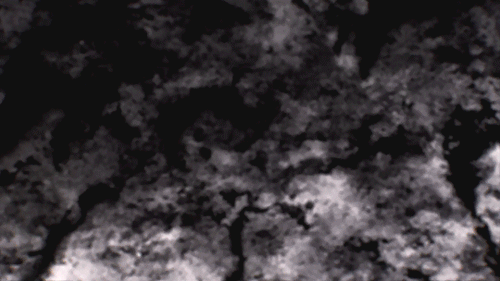Echozeta - Untitled




More Posts from Echozeta and Others
Are you looking forward to a future where we can’t even buy a kitchen/work/craft knife as an adult and have it delivered to your own home? Thanks UK bureaucrats for continuing to babify the nation. Good luck if you live rurally, are disabled, agraphobic, work long hours or can’t for any reason make it in person to a goverment santioned store.
https://petition.parliament.uk/petitions/222776

💧


*asexual laughter*



Two years ago, I wrote about Micaela Almonester, a tough-as-nails woman from the 1800s who survived an incredibly abusive relationship (her father-in-law shot her multiple times!) to build some of the great architecture of New Orleans. Today I got to see it in person for the first time. Her initials are still in the latticework.
http://www.rejectedprincesses.com/princesses/micaela-almonester


lesbians in space
Land is Sliding, Tell Us Where!
Summer in the northern hemisphere brings monsoon season, causing heavy rains and flooding that trigger landslides. Next time you see a landslide in the news, online, or in your neighborhood, submit it to our citizen science project Landslide Reporter to build the largest open global landslide catalog and help us and the public learn more about when and where they occur.
Rainfall is the most common cause of landslides.
After a storm, the soil and rock on a slope can become saturated with water and begin to slide downwards, posing a danger to people and destroying roads, houses and access to electricity and water supplies.

We have been monitoring rainfall from space for decades.
Orbiting the Earth right now, the Global Precipitation Measurement (GPM) mission is a group of 10 satellites that measure rain, snow, sleet and other precipitation worldwide every three hours. This data tells us where and when heavy rain is falling and if it could lead to disasters.

What can rainfall data tell us about landslides?
We’re using GPM data to understand where and when landslides are happening. A global landslide model uses information about the environment and rainfall to anticipate where landslides are likely to happen anytime around the world every three hours.

To improve the global landslide model and other landslide research, NASA is looking for citizen scientists like you!
If you find a landslide reported online or in your neighborhood, you can provide the event details in Landslide Reporter, our citizen science project.

Your detailed reports are added into an open global landslide inventory available at Landslide Viewer. We use citizen science contributions along with other landslide data to check our prediction model so we can have a better picture of how rainfall, slope steepness, forest cover, and geology can trigger a landslide.

Because the data is open, anyone can use the data for research or response.
When you report a landslide, you improve our collection of landslide data for everyone.
Help support landslide efforts worldwide by contributing to Landslide Reporter, and you can help inform decisions that could save lives and property today! Learn more about the project at https://landslides.nasa.gov. You can also follow the project on Twitter and Facebook.
Make sure to follow us on Tumblr for your regular dose of space: http://nasa.tumblr.com.


Can I talk for a moment about visual storytelling, cause, I feel like it’s something that a lot of adaptations forget about in lieu of trying to replicate their source material.
It’s a problem you see most often in anime derived from manga or light novels, but it’s also present in movies based on YA novels, and you gotta know what I’m talking about, start on black, opening narration, fade in as the main character explains the world and environment. This works in a book since the reader can’t see anything, they need the specifics of the world explained, but it feels like the movies are just like “well it worked for the book, it’ll work for us right?
I’d say it’s worse in anime, where characters will go on long internal soliloquies trying to explain their thought processes and complex emotions, which again, works for the manga, in a manga movement is very expensive, every single motion requires it’s own panel, which takes up the artist’s time, printed space, and a moment in the narrative, so it’s important to only show what absolutely needs to be shown. But animation is different, it’s all movement and the details are what sells it more than the dialogue.
The reason I wanted to make this post is because of one scene in One Punch Man that perfectly exemplifies how to translate a written thought process into visual storytelling. After getting punched to the moon (err, spoilers), Saitama has this thought process

and it’d be easy to translate that entirely literally in the anime, Saitama crouches, has an internal monologue as he tries to figure out how much force he needs to put into his jump, and then he launches. Instead though, the scene is done completely silently, to sell the fact that he’s in space, but the thought process isn’t removed, it’s just show visually.

He throws a bit of moon rock to gauge the moon’s gravity, then launches, it’s a much more thoughtful approach to the scene and the audience’s ability to interpret visual information.
I just, really wish more adaptations realized the inherent strength of the visual medium instead of relying entirely on the source material’s structure and reliance on its own medium.
-
 sorryidontlaugh-at-therighttimes reblogged this · 1 month ago
sorryidontlaugh-at-therighttimes reblogged this · 1 month ago -
 skizoh liked this · 3 months ago
skizoh liked this · 3 months ago -
 cat-hermit liked this · 4 months ago
cat-hermit liked this · 4 months ago -
 browncorduroys reblogged this · 5 months ago
browncorduroys reblogged this · 5 months ago -
 svartibaldur-deactivated20250401 liked this · 6 months ago
svartibaldur-deactivated20250401 liked this · 6 months ago -
 horses-who-smile liked this · 7 months ago
horses-who-smile liked this · 7 months ago -
 rubyangel235 reblogged this · 2 years ago
rubyangel235 reblogged this · 2 years ago -
 rubyangel235 liked this · 2 years ago
rubyangel235 liked this · 2 years ago -
 jugglernaught reblogged this · 2 years ago
jugglernaught reblogged this · 2 years ago -
 thebearmuse liked this · 2 years ago
thebearmuse liked this · 2 years ago -
 pacnrun reblogged this · 2 years ago
pacnrun reblogged this · 2 years ago -
 dumb-vampire-moment reblogged this · 2 years ago
dumb-vampire-moment reblogged this · 2 years ago -
 kingleothegreat liked this · 3 years ago
kingleothegreat liked this · 3 years ago -
 cornkretno-hip liked this · 3 years ago
cornkretno-hip liked this · 3 years ago -
 justmichisstuff liked this · 3 years ago
justmichisstuff liked this · 3 years ago -
 stardusteyes liked this · 3 years ago
stardusteyes liked this · 3 years ago -
 laughingcorpse liked this · 3 years ago
laughingcorpse liked this · 3 years ago -
 straights-world liked this · 3 years ago
straights-world liked this · 3 years ago -
 cawareyoudoin liked this · 3 years ago
cawareyoudoin liked this · 3 years ago -
 bigolsnailboi liked this · 3 years ago
bigolsnailboi liked this · 3 years ago -
 michaelmyersthestabbyboi liked this · 3 years ago
michaelmyersthestabbyboi liked this · 3 years ago -
 forbidd3nzon3 liked this · 3 years ago
forbidd3nzon3 liked this · 3 years ago -
 strawberryarson liked this · 3 years ago
strawberryarson liked this · 3 years ago -
 laing-caster reblogged this · 3 years ago
laing-caster reblogged this · 3 years ago -
 laing-caster liked this · 3 years ago
laing-caster liked this · 3 years ago -
 rainbow-beanie reblogged this · 3 years ago
rainbow-beanie reblogged this · 3 years ago -
 rainbow-beanie liked this · 3 years ago
rainbow-beanie liked this · 3 years ago -
 dr-hekyllandmr-jyde reblogged this · 3 years ago
dr-hekyllandmr-jyde reblogged this · 3 years ago -
 dr-hekyllandmr-jyde liked this · 3 years ago
dr-hekyllandmr-jyde liked this · 3 years ago -
 kandulce liked this · 3 years ago
kandulce liked this · 3 years ago -
 patchworkpoltergeist reblogged this · 3 years ago
patchworkpoltergeist reblogged this · 3 years ago -
 cornflower-cowboy liked this · 4 years ago
cornflower-cowboy liked this · 4 years ago -
 coconutshipwreck liked this · 4 years ago
coconutshipwreck liked this · 4 years ago -
 wild-leaf2 liked this · 4 years ago
wild-leaf2 liked this · 4 years ago -
 leftwobblerpizzadragon liked this · 4 years ago
leftwobblerpizzadragon liked this · 4 years ago